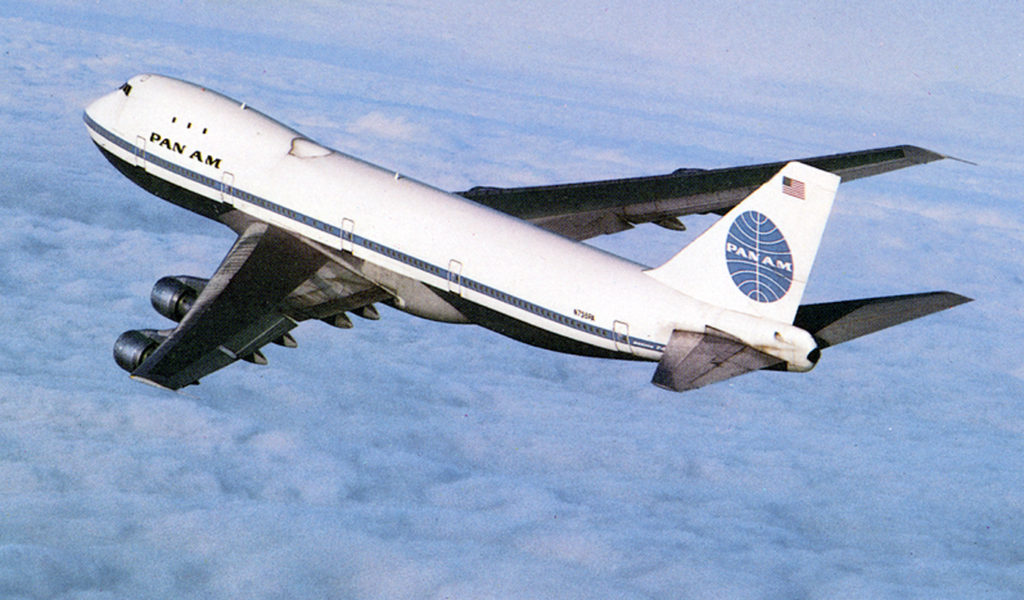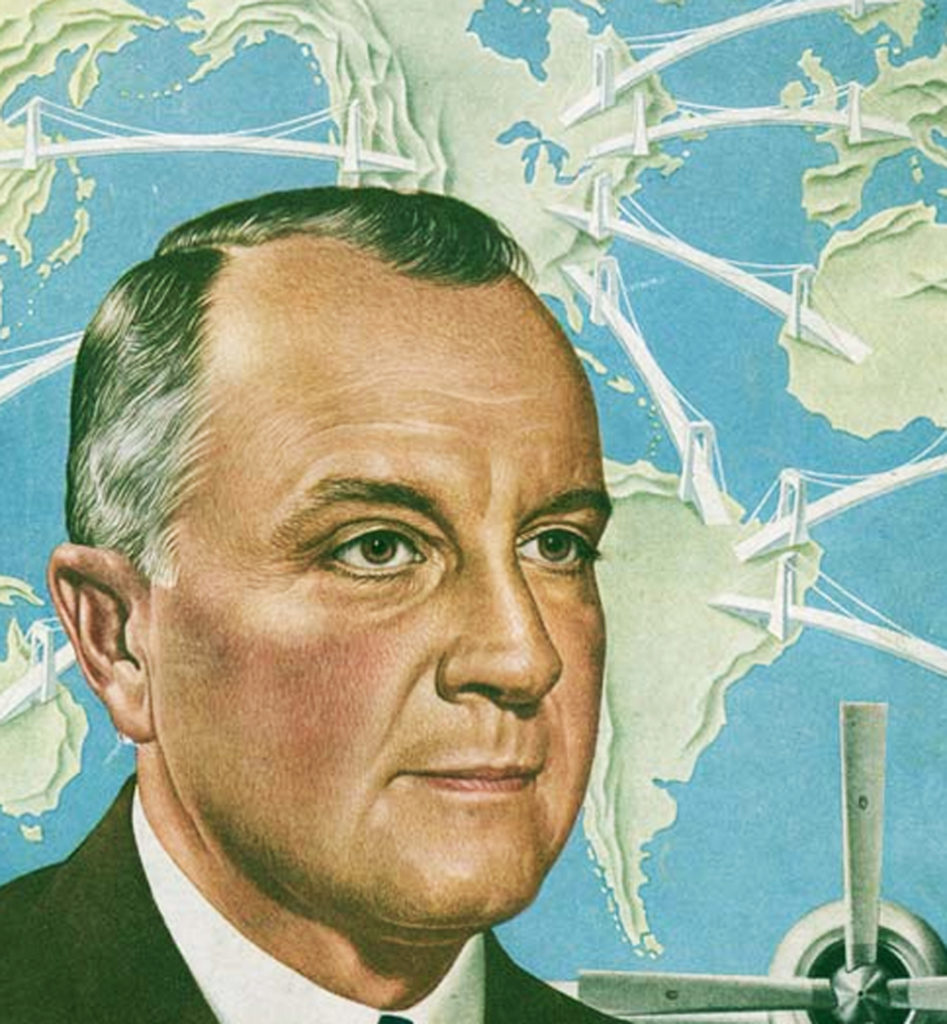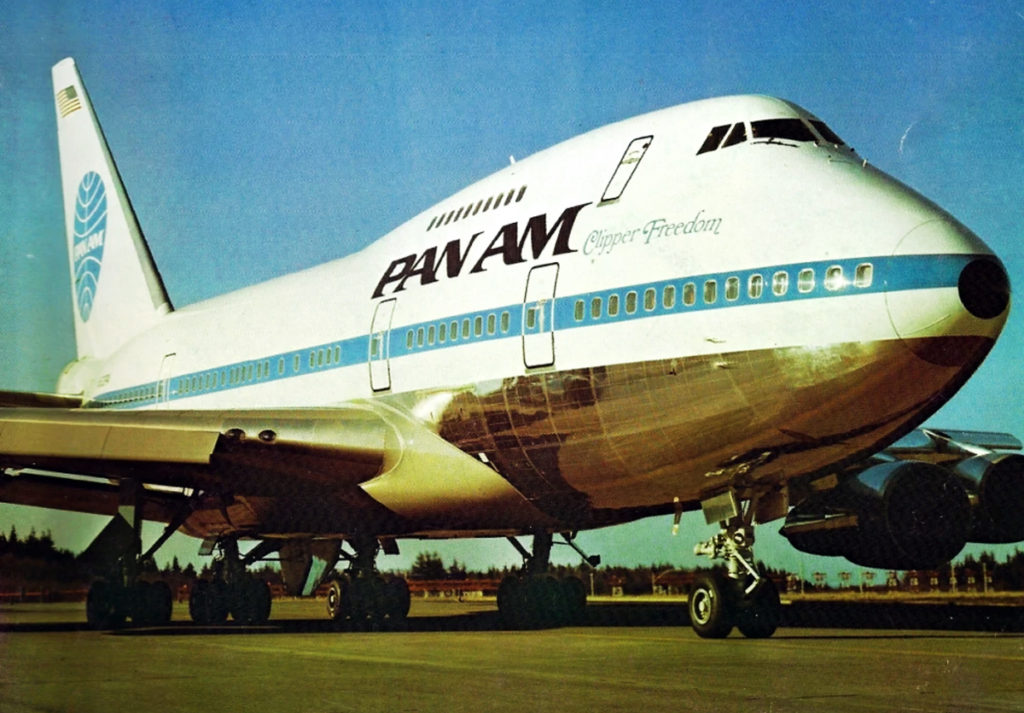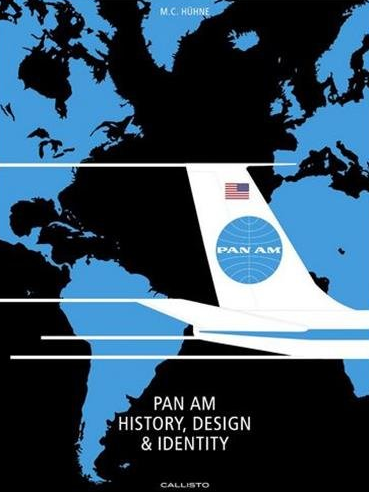Clipper Conclusion: The Fall of Pan Am, 30 Years Later

December 4, 2021
IT WAS thirty years ago, on December 4th, 1991, that Pan American World Airways ceased operations.
This is possibly, maybe, the most significant (and unfortunate) anniversary in airline history, marking the death of history’s most significant airline.
Pan Am’s firsts, bests, longests, mosts, and whatever other superlatives you might come up with, are untouched, and untouchable. Its achievements include conquest of the Pacific Ocean and launch of both the 707 and 747, the two most influential jetliners of all time. Founded and led by a visionary entrepreneur from New Jersey named Juan Trippe, the airline’s network would reach into every nook and corner of the planet, its blue globe logo among the world’s most widely recognized trademarks. It was the only airline to have its own Manhattan skyscraper — the Walter Gropius-designed Pan Am Building, soaring over Grand Central Terminal.
The carrier’s slow and ignominious decline, punctuated by the sales of its most valuable assets and — for a final coffin nail, the Lockerbie bombing — is a tale of hubris, poor management, the volatility of a deregulated airline industry, and plain old bad luck. Most agree that the final chapter began around the time of the disastrous merger with National Airlines in 1980. Six years later Pan Am would sell its Tokyo-Narita hub and Asian routes to United. Four years after that, its transatlantic network was handed over to Delta. The airline’s winnowed remains stumbled on for another year or so. It was just a shell of itself in the end, with dismal service and shabby old planes.

“Now the world is every man’s oyster,” Juan Trippe once said.
December 4th, 1991, was a Wednesday. I was laying over that night in a Sheraton in Burlington, Vermont. I almost never watch television in hotel rooms, but this time, for some reason, I had the news on. Suddenly the story broke. I remember some of the footage: panicky-looking employees rushing around a ticket counter, that sort of thing.
Pan Am’s final flight was a Boeing 727 from Barbados to Miami. Which was fitting, I guess. South Florida is where it all began, 64 years earlier, on a route from Key West to Havana.
For pilots, a job with Pan Am was once the most prestigious and glamorous job in aviation. By the end, though, they weren’t paying very much. I never had the chance to apply. On the day the carrier fell, I was a young Beech-99 captain still cutting his teeth. Working for a major carrier wouldn’t be a realistic option for several more years.
I was, however, lucky enough to have flown Pan Am a handful of times, including trips from Frankfurt to JFK on a 747, and from JFK to Rio de Janeiro on an L-1011. I also was a semi-regular customer on the Pan Am Shuttle between Boston and New York in the months before the shut-down. And, one of my most cherished memories is the day I spent plane-spotting on the roof of the Pan Am “Worldport” (later known as boring old Terminal 3) at Kennedy, as a seventh-grader in 1979.

Further reading…
There have been plenty — some would say too many — hardbound homages to the legacy of Pan Am. Most of these are pretty awful (crudely written flight attendant memoirs and such), but two are outstanding:
The first is Barnaby Conrad’s elegantly documented and superbly illustrated chronicle, Pan Am: An Aviation Legend. Not to detract from Conrad’s prose, but the photos and artwork are what make this volume special. The double-page spread of the flight attendants in the doorway of the “Clipper Freedom” is my favorite, along with the shot of the Beatles at Idlewild, coming down the stairs of the 707. This a fantastic book not merely for airline enthusiasts, but for any student of the history of 20th-century America.
The second is Matthias C. Hühne’s Pan Am: History, Design & Identity. So much of airline history has been told graphically — in the liveries, travel posters, promotional brochures and advertising copy of the world’s great airlines. It’s amazing, the level of attention and resources airlines once devoted to the finer points of their branding, and how spectacular so much of it was. This is particularly true with Pan Am.

Related Stories:
HAPPY BIRTHDAY TO THE 747
REMEMBERING LOCKERBIE
WE GAAN: TENERIFE, 40 YEARS LATER




Leave a Comment
Maximum 1500 characters. Watch your spelling and grammar. Poorly written posts will be deleted!
25 Responses to “Clipper Conclusion: The Fall of Pan Am, 30 Years Later”
You are viewing newest comments first. Click to reverse order
The Pan Am logo was also featured in the background of the skyline advertising in “Blade Runner.”
Mr Wattengel,your comment is not correct. Just before deregulation, Pan Am wasted a lot of $$$ buying National airlines for their domestic routes, only to discover they would have had free entry to those routes had they only waited a few years.
My last flight on Pan Am was JFK-MIA on a then-new 1011-500 Tristar circa 1983. That same airplane was used on long routes like SEA-LHR, yet it was 10-abreast in economy – incredibly tight and narrow seats.
Among Pan Am’s (and TWA’s)many fatal errors was overloading themselves with too many 747-100s and keeping them too long. United and Northwest upgraded to longer-range 747-200’s and all-new 747-400s to stay competitive with European and Asian airlines while Pan Am and TWA had dozens of old 747-100’s – including European and Asian castoffs.
I’ll never forget Pan Am – my first international flight was from Baltimore-Washington to London on Pan Am in 1973, and it opened the world to me like a pearl in an oyster. I flew Pan Am often from 1986 through its end from Washington Dulles to Europe (Frankfurt), as I worked for the U.S. Government and we had to “Fly America.” Both IAD and the flights were mostly empty, and I could stretch out over the 4 seat middle row economy on the overnite flights. However, usually on the way back home, our local U.S. Embassy could call Pan Am and get us upgraded to business class pretty routinely. I remember flying back home on Pan Am from Stockolm to JFK I think in 1989 in business class and laughing almost out loud watching “When Harry Met Sally.” Its hard to believe that the last row of the business class section was smoking and so the entire small business class cabin absolutely stank of cigarette smoke – you had to dry clean everything when you got home. But Pan Am still seemed classy even if it was deteriorating. I also remember fluing the Pan Am Shuttle from DC to LaGuardia and had James Schlesinger, Dan Rather and other luminaries sitting by me. What a bygone time…..
Pan Am (and TWA) are among the small number of companies whose demise prompted the creation of museums dedicated to their memory. The Pan Am museum is located at the Cradle of Aviation Museum on Long Island (in Garden City, in the former hangars of Mitchel Field). It is loaded with artifacts, models of Pan Am aircraft (you can find out the cost of the first transatlantic Boeing 314 flights from NY to Southampton from the actual schedule) and films depicting the company’s highlights.
My own experience with Pan Am was limited to shuttle service near the end of the line, although on a trip to Disney World on Carnival Airlines (a branch of the cruise ship company) a couple of years after Pan Am folded, I noticed the seat belt buckles on our 727 had an engraved Pan Am logo.
Your third photo down shows a 747 with an unpainted underside livery. Too bad unpainted skin has fallen out of favor – it looks great, saves money and saves fuel. It makes a great contrast to whatever livery an airline chooses.
Finding a beautiful livery now is difficult but if you want to see hundreds of disasters just look at police car liveries. Apparently chosen by law enforcement people with no skill or training in graphics, they range from 70s disco crap to just plain horrible. As a final highlight they often go for black rims and black wall tires, no alloy wheels and no wheel covers. I can see opting out of alloy wheels, but saving a few stingy dollars on wheel covers when their department is represented to the public by their vehicles?
Fondest memories… taking the helicopter from the roof of the PanAm building to what was then called Idewild (JFK)
Hello Patrick,
You might find this interesting aside about the demise of an old friend. I grew up in Tokyo and my father was intimately involved with Pan Am in a number of ways, but that’s for another day. As a result we flew on Pan Am regularly and as a young teenager, I was privileged to score a ride in the cockpit of a Pan Am 707 from Hong Kong Kaitak to Bangkok, Thailand (circa 1960), I was hooked.
Fast forward to many years later when in 1990 I was the co-pilot as part of a contract ferry crew on the last Pan Am 747, N747PA the Clipper Juan T Trippe. We left a very sad group of around a thousand Pan Am employees on the ramp at the JFK Hanger and flew out West to the boneyard at San Bernardino California. There is a bit more to this anecdote that I won’t bore you with, but it was a very bitter sweet flight for me, one I don’t look back too fondly on but can’t erase from my memory.
I traveled on Pan Am from SFO or LAX to SYD many times in the 80s, business class (roughly a $15K ticket at the time). I was usually treated as an inconvenience by both the ground and air staff, who gave off an air of condescension and dismal service. I was happy when United bought the routes. United, with all its many flaws was a huge step up in quality over Pan Am. Pan Am deserved its ignominious end.
Juan Trippe was a visionary, no doubt. But sometimes even visionaries lose sight of The Big Picture.
I recall a sweltering July night aboard a delayed Pan Am 707 at JFK. After well over an hour sitting with sweat literally pouring off us in rivers, the flight finally took off for London. The Flight Attendants apologized profusely for our horrible discomfort.
:Only later did I discover that our visionary Mr. Trippe had decided NOT to buy the ground air-conditioning carts for his fleet of brand-new 707s. What was that man thinking?
Another strange note. I often ride Amtrak’s Downeaster train between Boston and Portland, Maine. A lovely tho overly long (2hr 48 min) trip. There’s a large switching yard somewhere along the line. I was startled to see blue locomotives adorned with the unmistakeable Pan Am logo! Apparently the freight train line bought the rights to use it. Strange to see it, once on sleek aircraft, now on huge, earth-bound locos. And rather grubbed up with diesel stains, too. How the mighty had fallen.
This is sad. I never had the chance to fly Pan Am. I feel cheated. They had a nice logo and livery, too.
And now Pan Am is a railroad in the northeast and is about to be swallowed up by CSX, my former employer.
So it goes.
My last flight with Pan-Am was actually a trip to HQ, where I knew that I would be fired. I told the FA about it and she tried to ply me with alcohol. Very nice, but I didn’t want to attend this meeting sloshed. Here I was in First Class and I couldn’t enjoy the flight.
Also look up (it’s on YouTube) “Death Of An American Dream: The Pan Am Story”.
It’s an excellent documentary. It’s a bit cheesy and biased in a few places, but overall, outstanding.
the opening song and montage “Get Up” and the closing fade-out of “thank you for flying Pan Am” are especially touching.
I remember asking at the counter in MIA for a jumpseat to LAX. They took me to Ops introduced me to the Captain and he said “Jumpseat? Hell no, you’re going in First Class”. I loved Pan Am.
Another pop culture link: Gene Roddenberry flew for Pan Am from 1945-1948, and was serving on the Clipper Eclipse when it crashed in the Syrian desert in 1947.
https://images-na.ssl-images-amazon.com/images/I/41TG8pFGomL._SX331_BO1,204,203,200_.jpg
“Skygods — The Fall of PanAm” by Robert Gandt…An interesting read about this iconic airline!
Thanks for writing about Pan Am. I saw you mentioned two books, both of which I have. However, may I alert you to two others? One book I authored: Pan American World Airways – Images of a Great Airline Second Edition. The other I collaboratd with Jeff Kriendler, former VP for Corporate Communications at Pan Am, Pan Am – Personal Tributes to a Global Aviation Pioneer. For info, you can see my eBay link where I am selling both books as a set. Here is the link:
https://www.ebay.com/itm/185112129605
Thanks
Beautiful. You said it all. Thank you sir.
The key to any airline’s continued success is repeat custom. You have to have the same people coming back again and again as loyal customers.
With Pan Am, too many people thought that just Juan Trippe was enough.
Another excellent book about Pan Am was authored by Robert Gandt; Skygods is a great view from the cockpit account of both the highs and the lows. Gandt IIRC was a 707 captain at Pan American before age 30!
Some of my fondest memories are sitting on the roof of the Pan Am building at Idlewild with my dad, watching the planes land and take off. My parents were friends of a Pan Am pilot and we were invited to walk through a brand spanking new 707. My first airline flight was a Pan Am 707 from New York to Bermuda.
Part of the irony of Pan Am’s demise was the fact that they did so much to develop new routes and facilities around the world, only to have the government-owned or subsidized airlines of other countries undercut them in the marketplace.
I, too, made a pilgrimmage of sorts to both the Pan Am Building in Manhattan and the Worldport at JFK. The latter was kind of depressing from an architectural viewpoint, though the original section with the “flying saucer” roof was kind of cool. It’s sad that it met the wrecking ball a few years back.
With the current situation for the aviation industry there are a few pan ams in the Making in Middle east.
One of the key factors unequal de-regulation: When international routes were opened to domestic carriers and Pan-AM was not allowed to fly inside the US, the domestic carriers quickly established feeder routes to their new international routes.
Meanwhile was starved to death depending on connecting feeders from its competitors.
Back in the ’60’s on could buy a ticket om Around-the World Flights 1 or 2. Pan-Am allowed virtually unlimited stop-overs at all of the cities on the routes.
You forgot to mention that Pan Am was so dominant that Kubrick cast it as the carrier for his flight to the space station in 2001.